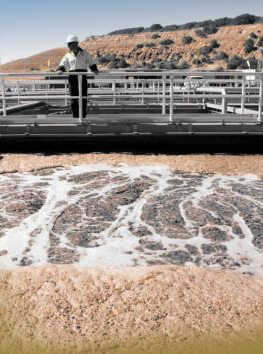Sulphide dosing tested
 Researchers have developed an advanced chemical dosing control method to tackle odour and corrosion issues in the wastewater networks.
Researchers have developed an advanced chemical dosing control method to tackle odour and corrosion issues in the wastewater networks.
Valued at $100 billion, these networks represent 70 per cent of the country's wastewater service infrastructure.
The breakthrough, part of the Australian Research Council (ARC) linkage project, stems from a decade of research.
The most recent project, funded by ARC and 17 Australian water industry partners, includes input from Urban Utilities, City of Gold Coast, SA Water, and The University of Queensland (UQ).
Sewer systems are expensive to replace and require dedicated protection, mainly by reducing hydrogen sulphide from sewage, which causes corrosion and odour issues. Australia's warm climate exacerbates these problems.
Ineffective control of hydrogen sulphide can double the annual cost of infrastructure maintenance, which already runs into hundreds of millions of dollars.
The search for a new approach began in 2013 with the development of the first generation of chemical dosing methods, which were limited to single pipes.
However, UQ researchers and industry partners have now created control algorithms for entire networks.
The next-generation chemical dosing algorithms control the distribution of chemicals across an entire sewer network, rather than just single pipes.
By predicting sulphide production using autoregressive models based on current flow measurements, these algorithms determine the optimal dose of ferrous salt needed for cost-effective sulphide control.
This method involves real-time manipulation of dosing units and selected sewage pumping stations, ensuring efficient chemical usage and significant reductions in both operational costs and hydrogen sulphide levels.
“The new method ensures optimal chemical delivery throughout the network, achieving 15 to 45 per cent savings in chemical consumption,” says Dr Juiling Li, a Research Fellow at UQ's Australian Centre for Water and Environmental Biotechnology.
The next-generation dosing method improves efficiency and effectiveness, reducing chemical consumption by 40 to 50 per cent.
Unlike traditional methods that follow deterministic guidelines, the new method dynamically controls chemical dosing.
This approach involves simultaneous manipulation of chemical dosing units and selected sewage pumping stations.
Adopting the new method should significantly reduce operating costs, particularly in chemical consumption for sulphide mitigation.
Long-term benefits include preventing asset loss and reducing maintenance demands.
“This is significant for workplace health and safety, as accessing sewers is dangerous and expensive,”Dr Li noted.








 Print
Print